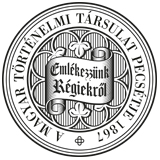Századok – 2011
KÖZLEMÉNYEK - Bilkei Irén: Megyei köznemesi társadalom a Mohács utáni évtizedekben. Zala megye negyedszázada a Habsburg-uralom kezdetén (1526-1550) V/1147
1182 BILKEI IRÉN THE COUNTY NOBILITY IN THE DECADES FOLLOWING MOHÁCS The County of Zala in the First Quarter Century of Habsburg Rule (1526-1550) by Irén Bilkei (Summary) The present study aims to establish some of the dominant features of noble society in the county of Zala in the period between 1526 and 1550, on the basis of the post-Mohács charters preserved in the archives of the convents of Zalavár and Kapornak. These institutions functioned as places of authentication, and their clientele comprised the local noble society; in this respect their archives offer a hitherto hardly used source material for the research of the nobility. The charters addressed to, and issued by, the two convents in the time of the double royal coronation (1526/27) and the following years, reflect exactly at a local level the struggle between John I Szapolyai and Ferdinand I, which, in the county of Zala, took the form of a conflict between Bálint Török of Enying and Tamás Nádasdy and their respective supporters. The charters show with equal precision the redistribution of landed wealth which took place after 1526. The death of John I in 1540 closed the gate before land acquisition via political volte-face, and consequently the way for the nobility to land and social rise led through the assumption of county offices, lordly service and advantageous marriages. These charters offer equally important material for an analysis of the working of the county authorities, which is hardly enlightened by other documents in this period. They give help in reconstructing the list of county officials and in establishing their material wealth and family connections. They have also made it possible to replenish the archontology of county officials, whose updated list is published in the present study, and to examine the group of persons who participated to different legal actions, the so-called royal men (homines regii). Besides, the author has payed special attention to those noblemen from the county of Zala who, while asuming local offices, also held office on a higher level, for instance as prothonotaries, royal attorneys or Chamber councillors; most of these persons were attached to the circle around Tamás Nádasdy. The charters shed valuable new light on the working of such county offices as the assembly and the judicial court (sedria), which the present study also discusses in detail. Finally, the author has reconstructed the network of familiaritas centered on the major political actors of the county, as well as the career of several outstanding noblemen, their relationships and affinities and, at least in some exceptional cases, some features of their material culture and way of life.
